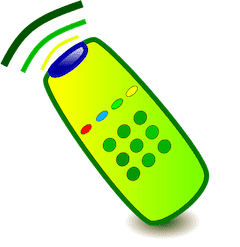FCC Allows Cable To Block Channels
Consumers No Longer Will Get Unencrypted Free Local HD Networks
In a recent ruling by the FCC, Cable TV companies now have the right to block or encrypt all their network television channels. In the past, they were mandated by the FCC to leave the same channels that were broadcast over the air unencrypted. This will force many consumers to subscribe to their higher-priced digital tier service which includes a cable descrambler box along with a higher associated rental fee.Bolster Falling Revenue
This was a well-orchestrated move by the Cable Television Industry which complained to the FCC that many people were currently using splitters and sharing their unencrypted cable service with neighbors. The FCC heard their plea and allowed them to encrypt all cable channels with one unwelcome condition. They must now allow 3rd party manufacturers to provide their own devices with digital cable descramblers built it to descramble their signal. This eliminates the need for a separate cable box rental from a cable provider.This now poses somewhat of a dilemma for Cable TV operators who up to this point always enjoyed being the sole provider of their digital boxes. This rental business was actually quite a cash cow for the cable industry and now they need to share this revenue with other vendors.
In all likelihood, this may have been a knee-jerk reaction by the Cable industry to bolster its falling subscriber base. It remains to be seen if they actually follow through and start scrambling all their basic channels. They may actually be somewhat hesitant to compete with other manufacturers by allowing them to sell their prized technology in their own digital boxes.
This could all end up going the way of the Cable card. A lot of excitement was generated when Cable Cards first made their appearance. Cable cards offered consumers a way to plug a digital descrambler card into the back of their HD TV and eliminate the need for a cable box. These cards never really took off the way the tech magazines had predicted. In the end, they just fizzled and died.
In a recent industry trade article, it was predicted that in the next eight years the average consumer will pay $200 a month for the TV portion of their cable bill.
Consumer Options
So what options are consumers left with that do not want to continue paying ever-increasing Cable TV prices?With faster internet connections many consumers have turned to the internet for their video content and have cut their Cable TV connections altogether.
Break out the rabbit ears. Now that all broadcast television is in HD which is actually a good thing for those that still want free TV. This means the days of snowy television reception are gone. With HD you either receive a picture or get nothing.
Our commitment to cutting the cable remains firm. In fact, this latest move has just strengthened our resolve. As new technology comes forth, rest assured we will present it here. For most people close to urban areas a simple HD antenna in the attic will do the trick and pull in most of the major networks for Free. Supplement this with a Roku or media streamer of choice, a subscription to Netflix, Amazon Instant, or Hulu, and being free and off the cable is still a viable money-saving solution to the Cable industry channel block.
For the latest in TvStreaming and Cord-Cutting News
Join US @ Chitchat
And you will be notified whenever we post a new article
Join US @ Chitchat
And you will be notified whenever we post a new article
Thanks for Making us Your TV Streaming Destination
Roku Channels • Index • Contact • Disclosure • Privacy
© 2025 mkvXstream.com
Use of third-party trademarks on this site is not intended to imply endorsement nor affiliation with respective trademark owners.
We are Not Affiliated with or Endorsed by Roku®, Apple, Google or Other Companies we may write about.

© 2025 mkvXstream.com
Use of third-party trademarks on this site is not intended to imply endorsement nor affiliation with respective trademark owners.
We are Not Affiliated with or Endorsed by Roku®, Apple, Google or Other Companies we may write about.


